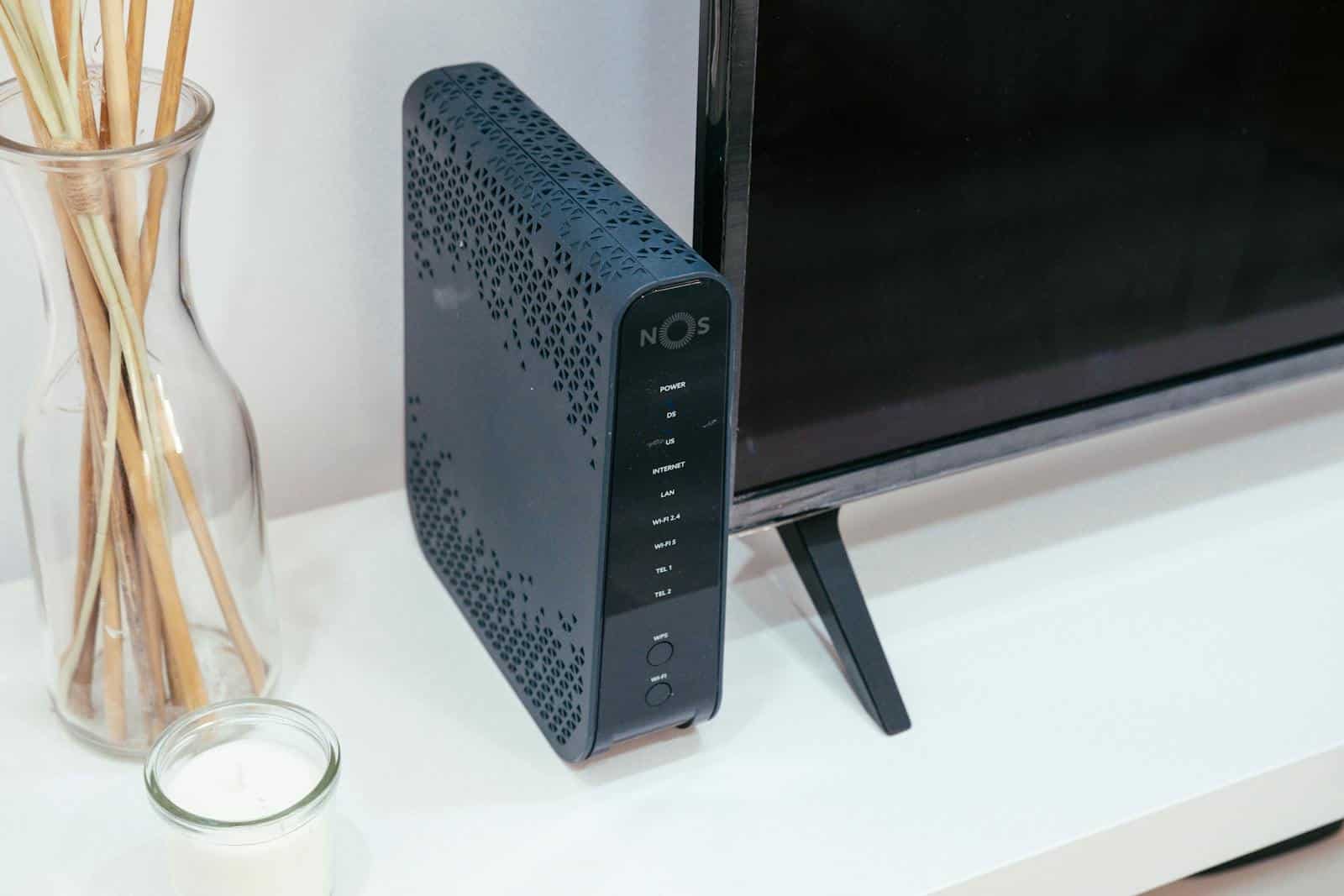Finding your router’s MAC address might seem tricky, but it’s a basic networking skill that can help with many tasks. A MAC address is a unique ID tied to your router’s hardware. You’ll need it for things like network setup or troubleshooting connection issues.
To check your router’s MAC address, log into your router’s admin page by typing its IP address (often 192.168.1.1) in your web browser, then look for “MAC Address” in the status or system information section. Keep in mind that routers have different MAC addresses for each network interface—one for the LAN port and another for the WAN port, as each interface has its own unique MAC.
If you can’t access the admin page, you can also find your router’s MAC address using command line tools. On Windows, you can use the “tracert” command to find your gateway IP address, which is your router. Most TP-Link routers and other brands show this info clearly in their web interfaces.
Ways to Find Your Router’s MAC Address
A router’s MAC (Media Access Control) address is a unique hardware identifier assigned to its network interfaces. You might need this address for tasks like setting up MAC filtering, assigning static IPs, or troubleshooting network issues. Here are the most reliable ways to locate it—whether you’re at your desk, using your phone, or digging through your device’s settings.
1. Check the Physical Label on the Router
This is often the quickest method. Most routers have a sticker or printed label on the underside or back that includes:
- The MAC address (sometimes labeled as “MAC,” “MAC ID,” or “Wi-Fi MAC”)
- The serial number
- The default SSID and password
Be aware that dual-band or tri-band routers may list multiple MAC addresses—one for each band (2.4 GHz, 5 GHz, etc.).
2. Use Your Router’s Web Interface
If the label is unreadable or missing, you can log into the router’s admin page. Here’s how:
- Open a web browser on a device connected to your network.
- Type the router’s IP address into the address bar. Common IPs include:
192.168.1.1192.168.0.110.0.0.1
- Log in using your router credentials.
- Default username/password combos like
admin/adminoradmin/passwordmay work unless you’ve changed them.
- Default username/password combos like
- Navigate to the “Status,” “Device Info,” or “Network” section.
- Look for entries like “LAN MAC Address,” “WAN MAC Address,” or “Wireless MAC.”
You may see several MAC addresses depending on the router’s features. Choose the one that corresponds to the interface you’re interested in (e.g., LAN vs. wireless).
3. Use a Connected Device to Discover the MAC Address
If you can’t access the router directly, you can still find its MAC address using a computer or smartphone already connected to the network.
On Windows:
- Press
Windows + R, typecmd, and press Enter. - In the Command Prompt, type:
arp -a - Look for the IP address that matches your router’s (typically the default gateway). The corresponding physical address is the MAC.
On macOS:
- Go to System Settings > Network.
- Select your active network connection and click Details.
- Look for the Router IP address.
- Open Terminal and type:
arp -aFind the IP address of your router and match it to the listed MAC.
On Android/iOS:
While these systems don’t give full ARP access without rooting or jailbreaking, apps like network scanners (e.g., Fing) can show you the MAC addresses of connected devices, including your router.
4. Check via ISP App or Admin Portal
If you use a router provided by your ISP (like Xfinity, AT&T, or Spectrum), the companion app or web portal often displays device information, including MAC addresses. Navigate to the router section within the app and look for connection or hardware details.
5. Advanced Users: Use a Network Scanner Tool
Power users can run full network scans using tools like:
- Advanced IP Scanner (Windows)
- Angry IP Scanner (cross-platform)
- Wireshark (for packet-level monitoring)
- Nmap (command-line network scanner)
These tools help identify the MAC addresses of all connected devices, including the router, and are especially useful for diagnosing complex networks.
Why the MAC Address Matters
Knowing your router’s MAC address isn’t just for tech troubleshooting. It enables:
- MAC address filtering to block or allow specific devices
- Static IP assignments for better local network organization
- Improved security when pairing devices or identifying intruders
- Support calls where ISP technicians need hardware verification
Understanding how to find your router’s MAC address gives you more control over your home network. Whether you’re fine-tuning your firewall or setting up port forwarding, this bit of info is often the first step.
Key Takeaways
- Router MAC addresses are unique hardware IDs found in your router’s admin page or through command line tools.
- Routers have different MAC addresses for each network port (LAN and WAN interfaces).
- MAC addresses are important for network security and can be used for MAC filtering to control device access.
Understanding MAC Addresses
MAC addresses are key components in networking that help devices communicate with each other. They serve as unique identifiers for network hardware and play a crucial role in how data moves across networks.
What is a MAC Address?
A MAC (Media Access Control) address is a unique identifier assigned to every network device. This address is permanent and built into the network hardware during manufacturing.
MAC addresses consist of 12 hexadecimal digits (0-9, A-F), typically written in pairs separated by colons. For example: 00:1A:2B:3C:4D:5E.
These addresses are also called physical addresses because they’re tied to the actual hardware. Unlike other network identifiers, MAC addresses don’t change when a device moves to a different network.
Every network interface on your devices has its own MAC address. This includes your computer’s Ethernet port and Wi-Fi adapter, which have separate and distinct MAC addresses.
MAC Address vs IP Address
While both identify devices on a network, MAC and IP addresses serve different purposes:
| Feature | MAC Address | IP Address |
|---|---|---|
| Layer | Physical (Layer 2) | Network (Layer 3) |
| Permanence | Usually permanent | Can change |
| Format | 12 hexadecimal digits | Four sets of numbers (IPv4) |
| Scope | Local network only | Global routing |
MAC addresses work at the physical network level, handling communication between devices on the same local network. IP addresses, however, enable routing between different networks across the internet.
When data travels through a network, the IP address determines the destination network, while the MAC address pinpoints the exact device on that network.
Importance of MAC Addresses in Networking
MAC addresses play several critical roles in how networks function.
They enable device identification on local networks. When your computer sends data to another device on your home network, it uses MAC addresses to ensure the information reaches the correct hardware.
Network security often relies on MAC addresses. Many routers allow MAC address filtering, which restricts network access to only approved devices.
MAC addresses are essential for troubleshooting network issues. Network administrators can track specific devices and monitor their activity using these unique identifiers.
In network switches, MAC addresses help build forwarding tables that determine where to send data packets. This makes network communication more efficient by reducing unnecessary traffic.
Preparing to Locate Your Router’s MAC Address
Before diving into the technical process of finding your router’s MAC address, you need to gather some important information and tools. This preparation will make the search much easier and help you avoid common mistakes.
Determining Router’s Documentation and Support
Most routers come with detailed manuals that explain how to access various settings, including MAC address information. Check if you still have the original packaging or documentation that came with your router. These materials often include login information and instructions for accessing the admin panel.
If you’ve lost the physical documentation, don’t worry. Most router manufacturers provide digital copies on their websites. Simply find your router’s model number (usually printed on the bottom or back of the device) and search for it online.
Many manufacturers also offer customer support lines or chat services. These can be helpful if you get stuck during the process. Write down the support information before you start, just in case you need assistance.
Identifying the Router Manufacturer
Knowing your router’s brand and model is essential for finding its MAC address. This information helps you access the correct admin interface and follow the right steps.
Look at the router itself for branding information. Common manufacturers include:
- Netgear
- Linksys
- TP-Link
- Asus
- D-Link
The model number is typically printed on a label on the bottom or back of your router. It might look something like “RT-AC68U” or “Nighthawk R7000.”
If the label is worn or missing, check your internet service provider’s documentation. Many ISPs provide specific router models to their customers.
Getting Tools for Finding MAC Address
You’ll need a few basic tools to locate your router’s MAC address. First, make sure you have a device (computer, tablet, or smartphone) connected to your network.
For computer users, become familiar with basic networking commands:
- Windows: Command Prompt with
ipconfigcommand - Mac: Terminal with
networksetuporarpcommands - Linux: Terminal with
iporarpcommands
These commands help identify your router’s IP address, which you’ll need to access the admin panel.
You should also know your router’s login credentials. The default username and password are often printed on the router itself or in the documentation. Common defaults include “admin” for both username and password, but these should be changed for security.
A web browser will be needed to access your router’s admin interface once you have the IP address.
Finding the MAC Address on Different Devices
Finding your router’s MAC address can be done from various devices in your home network. Each method is simple once you know where to look in your device settings.
On Windows Computers
To find your router’s MAC address on a Windows computer, you have several options. The easiest method is using the Command Prompt.
- Press Win + R keys and type
cmdto open Command Prompt - Type
ipconfig /alland press Enter - Look for the “Default Gateway” address (usually 192.168.1.1 or similar)
- Then type
arp -aand press Enter - Find the Default Gateway IP in the list and note the corresponding “Physical Address”
This physical address is your router’s MAC address.
You can also log into your router’s admin panel through a web browser. Type your router’s IP address in the browser, log in with your credentials, and find the MAC address in the device information or status page.
Remember that routers have different MAC addresses for each interface. The LAN interface and WAN interface will have separate MAC addresses.
Using iPhones or iPads
Finding your router’s MAC address on Apple devices is straightforward through the Wi-Fi settings.
- Open the Settings app on your iPhone or iPad
- Tap on Wi-Fi
- Look for the connected network and tap the (i) or (ⓘ) icon next to it
- Scroll down to find “Router” information
The MAC address might be labeled as “Router MAC Address,” “Wi-Fi Address,” or simply “MAC Address.”
If this information isn’t available directly, you can download network scanner apps from the App Store. These apps scan your network and display information about all connected devices, including your router and its MAC address.
Make sure your device is connected to your home Wi-Fi network before attempting to find this information.
Via Wi-Fi Settings on Various Devices
Many devices let you view your router’s MAC address through Wi-Fi settings menus.
On Android phones and tablets:
- Go to Settings > Network & Internet > Wi-Fi
- Tap the gear icon next to your connected network
- Look for “Router” or “Gateway” information
On smart TVs and streaming devices, check the network status or connection information in the settings menu.
You can also log into your router’s control panel through any web browser. The address is typically printed on the router itself or in the manual. Look for sections labeled “Device Information,” “Status,” or “System Information.”
Remember that routers have separate MAC addresses for their WAN and LAN interfaces. The WAN MAC connects to your internet provider, while the LAN MAC connects to your home devices.
Accessing the Router Interface
Finding your router’s MAC address usually starts with accessing the device’s control panel. This process involves using a web browser and navigating through your router’s settings.
Using a Web Browser to Access Router Settings
To access your router, you’ll need a web browser like Chrome, Firefox, or Safari. Open the browser on any device connected to your network. Type your router’s IP address in the address bar. Common router addresses include:
- 192.168.0.1
- 192.168.1.1
- 10.0.0.1
If you don’t know your router’s IP, you can find it by:
- On Windows: Open Command Prompt and type
ipconfig– look for “Default Gateway” - On Mac: Open Terminal and type
netstat -nr | grep default - On smartphones: Check your Wi-Fi settings under “Gateway” or “Router”
Enter your login credentials when prompted. If you’ve never changed them, check the sticker on your router for default username and password. Many routers use “admin” for both fields.
Navigating the Router’s Web Interface
After logging in, you’ll see your router’s dashboard. Each router brand has a different layout, but most follow similar patterns. Look for sections labeled:
- Device Info or System Information
- Network Settings or Network Status
- WAN (Wide Area Network) settings
- LAN (Local Area Network) settings
The MAC address information is typically found in these areas. Router interfaces from brands like Netgear, TP-Link, and Linksys display MAC addresses for both the WAN and LAN interfaces.
Remember that your router has multiple MAC addresses – one for each network interface. The WAN MAC address is what your internet service provider sees, while the LAN MAC address is visible to devices on your home network.
Using Command Line Tools
Command line tools offer a quick and reliable way to find your router’s MAC address. These text-based interfaces work across different operating systems and often provide more detailed information than graphical methods.
Applying ipconfig in Windows
Finding your router’s MAC address in Windows is simple using the Command Prompt. To begin, open Command Prompt by pressing Win+R, typing “cmd” and pressing Enter.
Once the black window appears, type ipconfig /all and press Enter. This command shows all network connections on your computer. Look for your active connection (either “Ethernet adapter” or “Wireless LAN adapter”).
Find the line labeled Default Gateway – this is your router’s IP address. To find the MAC address, type arp -a and press Enter. This displays a table showing IP addresses and their corresponding MAC addresses.
The MAC address will appear as six pairs of numbers and letters separated by hyphens (like 00-11-22-33-44-55) next to your router’s IP address.
Employing ifconfig on Mac or Linux
Mac and Linux systems use similar commands for finding router MAC addresses. Open Terminal on your Mac or Linux computer to get started.
For Mac users, type netstat -nr | grep default to find your router’s IP address. On Linux, use ip route | grep default instead.
Once you have the IP address, use the command arp -a on both systems. This displays a list of all devices on your network with their MAC addresses.
Mac users can also type arp -n followed by your router’s IP address for direct results. For example: arp -n 192.168.1.1
Linux users might need the ip command: ip neigh show will display neighboring devices and their MAC addresses. Look for your router’s IP address in the results.
Troubleshooting Common Issues
When technical problems arise with router MAC addresses, they often fall into specific categories that can be fixed with the right approach. Fixing these issues quickly helps keep your network secure and working properly.
Addressing Inaccessible Routers
If you can’t access your router to check the MAC address, try these solutions:
Power cycle your router
- Unplug your router
- Wait 30 seconds
- Plug it back in
- Wait 2-3 minutes for it to restart completely
Check physical connections
- Ensure all cables are properly connected
- Look for damaged Ethernet cables that might need replacement
Sometimes router access is blocked by incorrect IP addresses. The default router IP is typically 192.168.0.1 or 192.168.1.1, but this can vary by manufacturer. Look at the router’s label for the correct address.
If these steps don’t work, you might need to reset your router to factory settings. Be careful with this step as it removes all your custom settings.
Resolving Incorrect MAC Address Displays
When your router shows wrong MAC addresses or unknown devices appear, take these steps:
- Verify the format – MAC addresses should follow a standard format (six pairs of characters separated by colons or hyphens)
- Update router firmware – Outdated firmware can cause display issues
- Check for spoofing – Some devices may have cloned MAC addresses
To identify unknown devices on your network:
- Look up the MAC address using online MAC lookup tools
- Check the first six digits (OUI) to identify the manufacturer
- Run a packet capture to see what traffic the device is generating
For better security, enable MAC filtering on your router to only allow known devices.
Expert Help with JustAnswer
When troubleshooting becomes too complex, professional help may be needed. JustAnswer connects you with networking experts who can:
- Guide you through advanced troubleshooting steps
- Help identify security threats from unknown MAC addresses
- Provide manufacturer-specific solutions for your router model
The service works through a simple question-and-answer format. You describe your problem, and an expert responds quickly with personalized advice.
Experts can help determine if unknown devices are legitimate or signs of network intrusion. They can also walk you through checking client connections and securing your network properly.
The cost varies based on the complexity of your issue, but many users find the peace of mind worth the investment.
Frequently Asked Questions
Finding a router’s MAC address is essential for network troubleshooting and security. These common questions cover different methods across various devices and operating systems.
What steps are needed to locate the MAC address of a router through Windows 10?
To find your router’s MAC address in Windows 10, first determine your router’s IP address. Open Command Prompt by typing “cmd” in the Start menu.
Type “ipconfig” and press Enter. Look for the “Default Gateway” address – this is your router’s IP.
Next, type “arp -a” followed by the router’s IP address (for example: arp -a 192.168.1.1). The corresponding MAC address will be listed in the Physical Address column.
How can one find the MAC address of a router using command-line tools?
The most direct command-line method uses the ARP (Address Resolution Protocol) cache. Open Terminal on Mac or Command Prompt on Windows.
Type “ping” followed by your router’s IP address (for example: ping 192.168.1.1) to ensure connection. Then enter “arp -a” to display the ARP cache table.
The router’s IP address will be linked to its MAC address in the results, usually shown in a format like “c8:d7:19:14:f1”.
What procedure is followed to determine a Cisco router’s MAC address via command-line interface?
To check a Cisco router’s MAC address, connect to the router through SSH or console. Log in with admin credentials.
Enter “enable” mode and type “show interfaces” to see all network interfaces. Each interface listing will include its MAC address.
For a specific interface, type “show interfaces GigabitEthernet0/0” (replace with your interface name). The MAC address appears as “Hardware is…” followed by the address.
Is there a method to obtain the MAC address of a router on an Android device?
On Android, install a network analyzer app like “Network Analyzer” or “Fing” from the Google Play Store. These apps scan your network and show connected devices.
Open the app and run a network scan. The router will appear in the device list, usually labeled as “Gateway” or with the manufacturer’s name.
Tap on the router entry to see detailed information including its MAC address.
In what ways can the MAC address of a router be used for network configuration and settings?
MAC addresses help with MAC filtering, which controls which devices can connect to a network. The router’s MAC is needed to set up this security feature.
Some ISPs use MAC address authentication to verify authorized equipment. When replacing a router, you might need to register the new MAC address with your provider.
Network monitoring tools use MAC addresses to track device activity and connection history across the network.
Can the MAC address of a router be discovered through any online MAC address lookup tools?
Online MAC lookup tools can’t find your router’s MAC address directly since they don’t have access to your local network. These tools only identify the manufacturer of a device from a MAC address.
To use these tools, you must first find the MAC address using one of the methods mentioned earlier. Then you can enter it into an online MAC lookup tool.
These lookup services can tell you which company made the router based on the first six characters of the MAC address, which is the Organizationally Unique Identifier (OUI).







